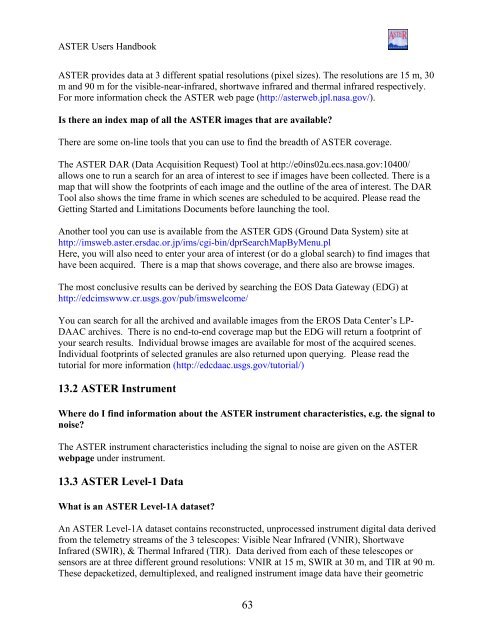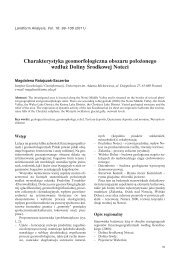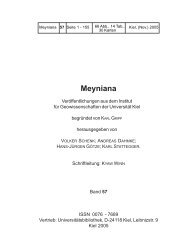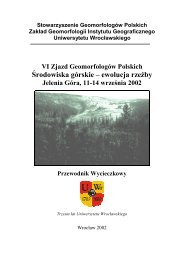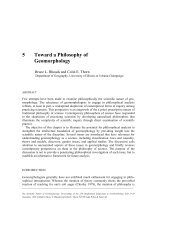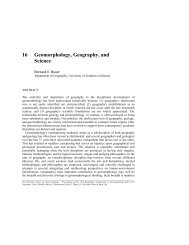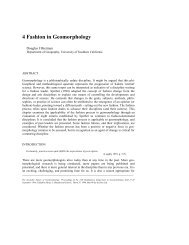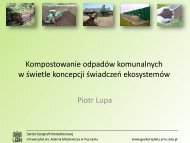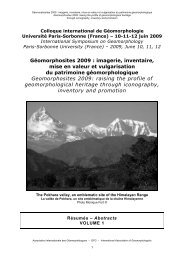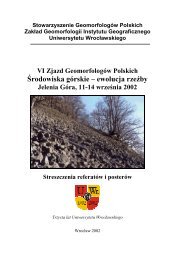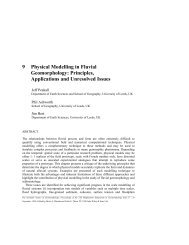ASTER User's Guide - Aster - NASA
ASTER User's Guide - Aster - NASA
ASTER User's Guide - Aster - NASA
Create successful ePaper yourself
Turn your PDF publications into a flip-book with our unique Google optimized e-Paper software.
<strong>ASTER</strong> Users Handbook<br />
<strong>ASTER</strong> provides data at 3 different spatial resolutions (pixel sizes). The resolutions are 15 m, 30<br />
m and 90 m for the visible-near-infrared, shortwave infrared and thermal infrared respectively.<br />
For more information check the <strong>ASTER</strong> web page (http://asterweb.jpl.nasa.gov/).<br />
Is there an index map of all the <strong>ASTER</strong> images that are available?<br />
There are some on-line tools that you can use to find the breadth of <strong>ASTER</strong> coverage.<br />
The <strong>ASTER</strong> DAR (Data Acquisition Request) Tool at http://e0ins02u.ecs.nasa.gov:10400/<br />
allows one to run a search for an area of interest to see if images have been collected. There is a<br />
map that will show the footprints of each image and the outline of the area of interest. The DAR<br />
Tool also shows the time frame in which scenes are scheduled to be acquired. Please read the<br />
Getting Started and Limitations Documents before launching the tool.<br />
Another tool you can use is available from the <strong>ASTER</strong> GDS (Ground Data System) site at<br />
http://imsweb.aster.ersdac.or.jp/ims/cgi-bin/dprSearchMapByMenu.pl<br />
Here, you will also need to enter your area of interest (or do a global search) to find images that<br />
have been acquired. There is a map that shows coverage, and there also are browse images.<br />
The most conclusive results can be derived by searching the EOS Data Gateway (EDG) at<br />
http://edcimswww.cr.usgs.gov/pub/imswelcome/<br />
You can search for all the archived and available images from the EROS Data Center’s LP-<br />
DAAC archives. There is no end-to-end coverage map but the EDG will return a footprint of<br />
your search results. Individual browse images are available for most of the acquired scenes.<br />
Individual footprints of selected granules are also returned upon querying. Please read the<br />
tutorial for more information (http://edcdaac.usgs.gov/tutorial/)<br />
13.2 <strong>ASTER</strong> Instrument<br />
Where do I find information about the <strong>ASTER</strong> instrument characteristics, e.g. the signal to<br />
noise?<br />
The <strong>ASTER</strong> instrument characteristics including the signal to noise are given on the <strong>ASTER</strong><br />
webpage under instrument.<br />
13.3 <strong>ASTER</strong> Level-1 Data<br />
What is an <strong>ASTER</strong> Level-1A dataset?<br />
An <strong>ASTER</strong> Level-1A dataset contains reconstructed, unprocessed instrument digital data derived<br />
from the telemetry streams of the 3 telescopes: Visible Near Infrared (VNIR), Shortwave<br />
Infrared (SWIR), & Thermal Infrared (TIR). Data derived from each of these telescopes or<br />
sensors are at three different ground resolutions: VNIR at 15 m, SWIR at 30 m, and TIR at 90 m.<br />
These depacketized, demultiplexed, and realigned instrument image data have their geometric<br />
63


